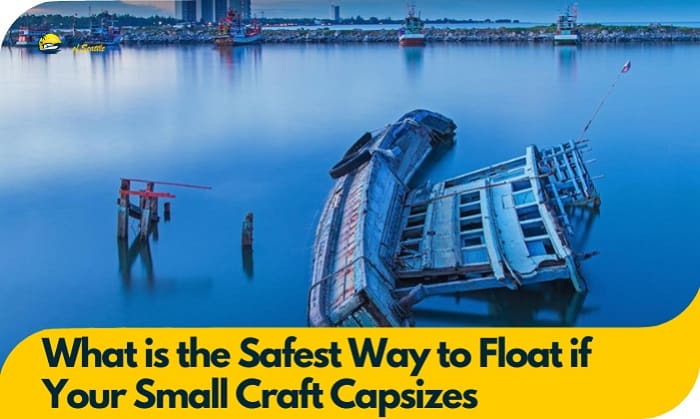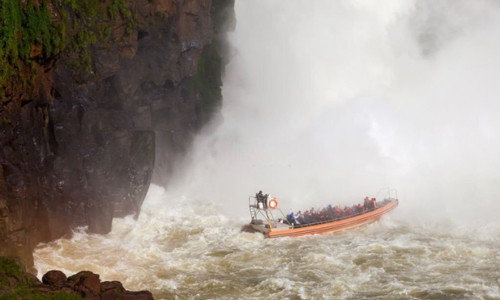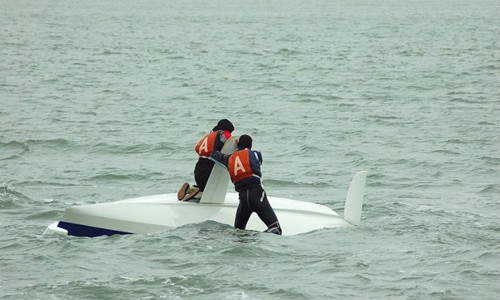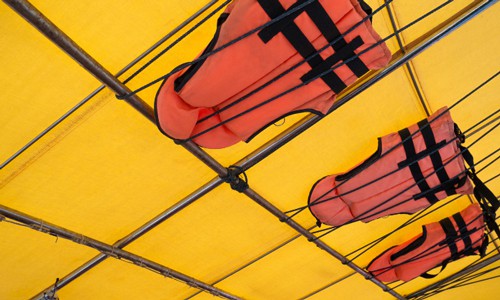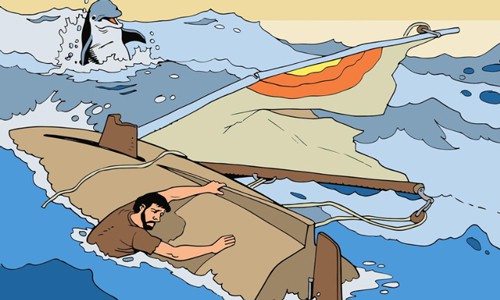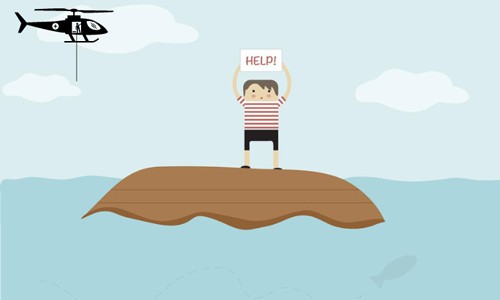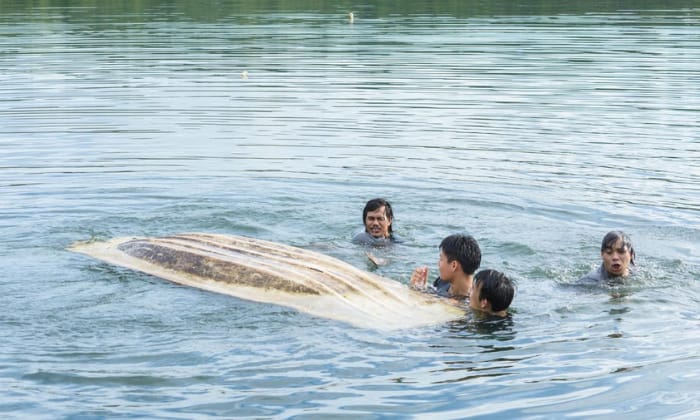If you find yourself sailing in a storm or rough waves, and your boat capsizes, you must first stay calm. Panicking only makes the situation worse and lower your chances of survival.
What is the safest way to float if your small craft capsizes? First, put on a personal flotation device (PFD) or lifejacket if you aren’t already. Locate any floating object that you can climb or hang on to preserve your energy. Then, contact an emergency hotline or use flare guns to make yourself visible to those nearby.
Table of Contents
Floating Techniques
Here are some of the safest ways to float if your boat capsizes:
1. Float on the Upstream Side
If you are paddling in a swift river current, one of the best floating methods is to float on the watercraft’s upstream side. You can be crushed by boulders or hit by rocks if you go along downstream.
To float, lift your body so your back is “flat” against the water’s surface. Keep your arms stretched. Your hands and feet can be lightly submerged in the water as long as they point downstream.
2. Keep Your Head Above the Water
When you keep your head submerged, it increases your chances of drowning. Plus, you’ll get tired faster. It is best to hang on to a floating object to preserve your energy and reduce the possibility of hypothermia.
3. Look for Floatation Devices
If you or your fellow passengers do not know how to swim, look for objects to help you stay afloat. These can be PFD or lifejackets, coolers, paddlers, and doors. These help conserve your energy, especially since rescue may take a long time. You can also string together empty plastic bottles or jugs.
Survival strategies while floating
When your craft capsizes, your first instinct may be to swim to the shore. However, this is rarely a good idea since you need to conserve energy. Some people underestimate their distance to the shore and may drown from exhaustion before they get to land.
Follow the tips below instead:
1. Stay With Your Boat
Small boats, even when capsized, will stay afloat. Staying close to your craft can also help other passersby to spot you. A lone head in the water is difficult to notice amid large bodies of water and harsh waves.
In case your boat gets swamped far from shore, swim toward any object or debris.
2. Call for Help
If you have access to a proper mobile network, call the emergency hotline, such as 911 or the Coast Guard’s number in your region.
However, radio is generally more reliable as phone signals can be erratic when you are far from the shore. Use your radio to contact the emergency channel by pressing the red Mayday (or Distress) button or turning on the emergency transponder.
You can also do this the manual way. Search for your boat’s flare gun and fire periodically. It’s best to do this when you know there are people around (e.g., you hear a helicopter or another boat in the distance).
If flare guns are unavailable, search for a bright cloth and find a way to tie and raise it as high as possible. Wave it around so anyone nearby can spot it from afar.
3. Avoid the Possibility of Hypothermia
Staying in the water for a long can give you hypothermia. This is very dangerous, even when the seas are not cold. For example, if the waters reach a temperature of 32.5 degrees Fahrenheit, you may pass away in 15-45 minutes, if not quicker.
If your watercraft is small, like a canoe, you can try righting it. Otherwise, climb above the capsized craft and make signals for help.
Tips for safe floating
- While floating, try to protect your neck and head as much as possible. A nasty concussion can reduce your chances of survival. Tuck your chin toward your head and avoid diving underwater.
- By creating as much surface area with the water as possible, you’ll increase your stability when floating.
- Staying close to the vessel is the best practice, but if it shows any sign of sinking, locate the nearest floating object so you can climb or hang onto it.
- Try to keep your knees close to your chest to preserve body heat.
If the boat gets caught in a fast current and floats away before you can reach it, refrain from swimming after it.
Why Do Small Crafts Capsize?
Typically, a small craft capsizes in swift water. It can also overturn when overloaded or the weight is not distributed evenly. Hitting an obstruction can also cause small vessels to turn over while in the water.
It is dangerous when a small craft overturns. This happens suddenly, and passengers can easily get hurt when thrown overboard. It can also cause people to die from hypothermia or get hit by the boat. There is also the risk of getting trapped under the craft.
Conclusion
What is the safest way to float if your small craft capsizes? Stay calm. Keep your head above the water as you float on your back. Try to stay near the boat and signal for help.
Always remember to conserve your energy. This ensures you last longer as you wait for the rescue to arrive. Look out for your surroundings, especially your fellow passengers who may need assistance floating or staying calm.
In any case, keeping a cool head increases your chances of survival in such an emergency.

Ten years of enjoying countless trips on boats never made me love them any less! So I am here to put all those experiences into good use for other boaters who want to have a safe and fun trip with their friends and families.

